Montessori Philosophy & Curriculum
Dr. Maria Montessori
Dr. Maria Montessori, the founder of the Montessori method, believed that education begins at birth and that the first stage of human life (from birth through six years) is when character is formed. The core of Montessori philosophy is that a child is free to learn because he/she has slowly acquired an inner discipline from exposure to both physical and mental order. Habits of order, concentration, perseverance and thoroughness established in the early years will provide a confident and competent learner in later years.
Based on her philosophy of education, she developed materials to assist children in reaching their full potential. Montessori also stated that movement was crucial to learning and children learn with their hands. Montessori materials are manipulative and begin with concrete lessons and continue to abstract ones. Children vary in the way they learn (some are visual learners, some are auditory learners, etc.). The Montessori classroom provides a multisensory approach to learning. The success of the Montessori method has developed into thousands of Montessori schools that cover six continents.
The Montessori Curriculum encompasses five key elements to educating children.
These areas of study are noted below.
-
Practical Life

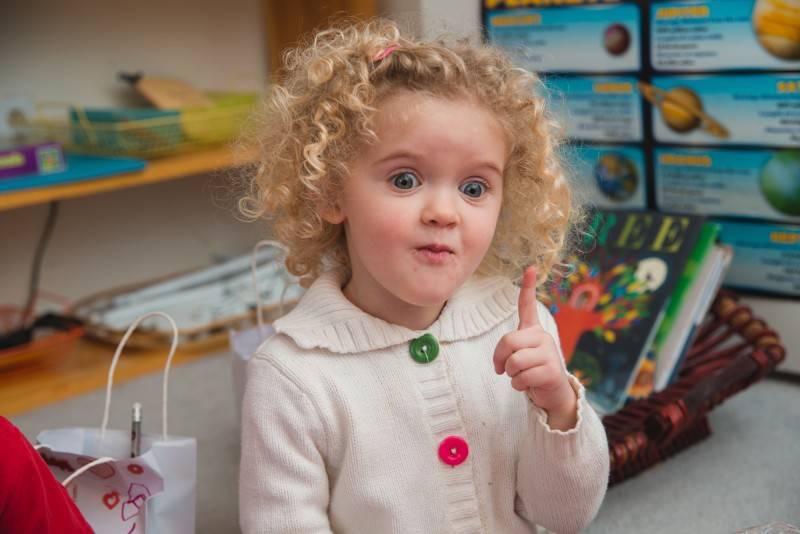
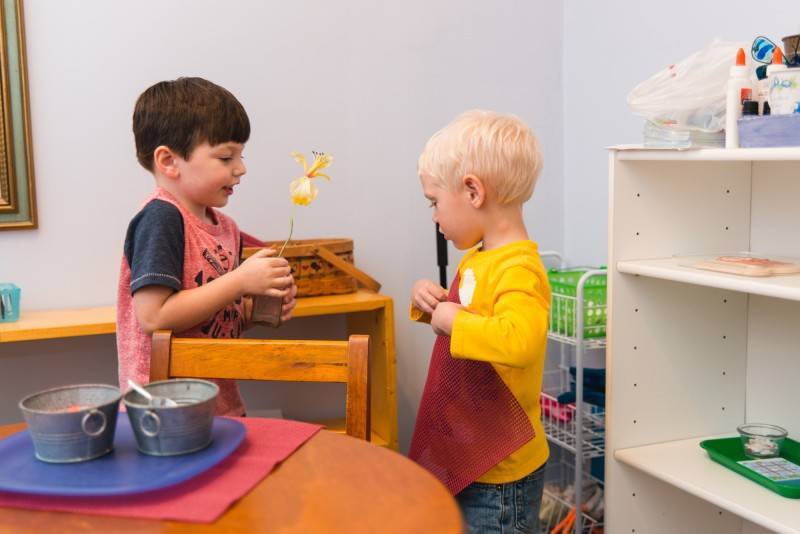

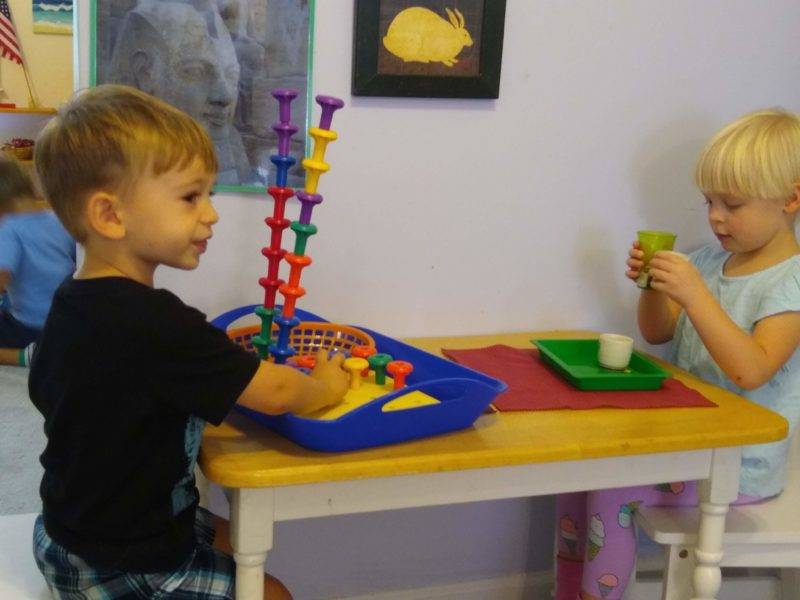

When children begin in a Children’s House classroom (3-6 years old), they begin in the area of Practical Life.
The work in this area is inherent in each activity in the classroom. This area is designed to develop the skill or order, concentration, coordination and independence.
Practical Life is also the area of the classroom that resembles the child’s home, with many of the materials located in this area mimicking those used in the home environment.
The work generally follows a left to right, top to bottom orientation in order to prepare the eyes for reading.
-
Sensorial
Children cannot imagine anything in their mind until they have perceived it through one or more of their senses and then experienced it.
Montessori Sensorial materials are designed to allow children to experience one of their senses by isolating that sense. These materials help children to make order of their environment.
One of the major purposes is to help the child in the process of classifying his/her environment. The child develops the ability to refine and classify these perceptions by qualities. This allows for order and leads to logical reasoned thought.
This process is:
- Perception
- Experience
- Classification
- Re-experience
- Language
- Assimilation
- Abstraction
It is by repeating the exercises of the senses and experiencing the environment, that the child will master the environment. This will lead to reasoned thought and will develop into the ability to make judgements.






-
Cultural






The cultural area in a Montessori classroom is comprised of:
- Geography
- Science
- Music
- Art
At the 3-6 year old level, children are beginning their move out from relatively insulated experiences of infancy and very early childhood to a greater experience of and interest in the world around them.
Montessori fosters this budding interest by exposing the child to a general understanding of our world and their place within it.
-
Mathematics
Children can learn math easily if it is presented in a concrete way. A child needs to manipulate and experience. A storehouse of order and sequence must be built.
Practical Life lessons are indirect preparation for Math. They offer exposure to sequence, order and exactness. Math concepts are concrete and move toward abstraction and repetition is the key. It is through repeated and successive mathematical play that children find the consistency.
Once a child has mastered 1-10, the Montessori curriculum branches into studies of the basic operations of addition, multiplication, subtraction and division, and introduction to the decimal system, and more advanced counting centered on a study of square and cube root.



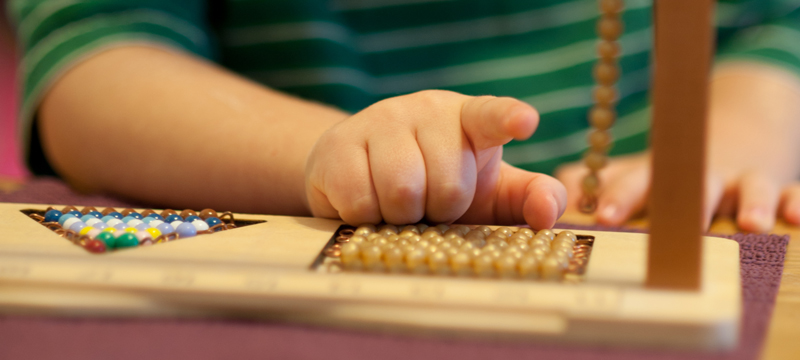


Language




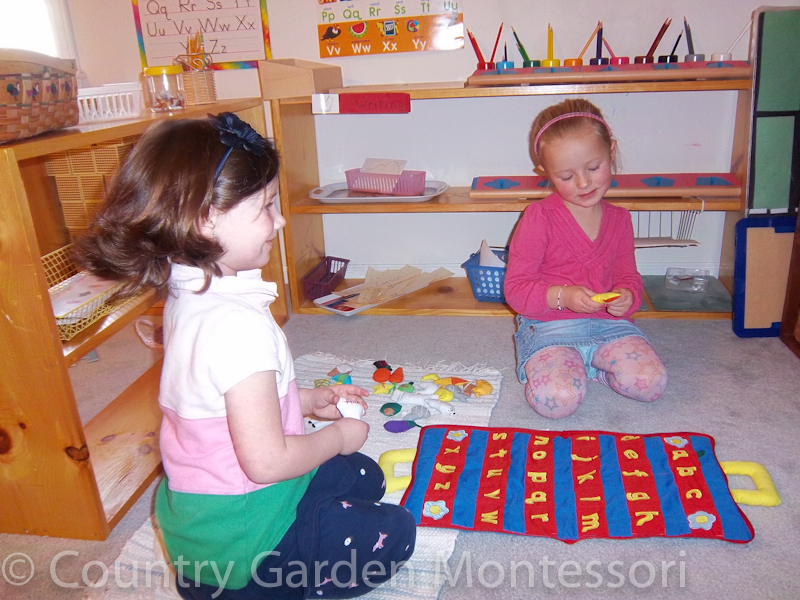
The sensitive period for language occurs between birth and the age of six, when the child masters his/her own language.
A child needs concrete experiences to develop language skills. It is fundamental for Language Arts instruction to begin with the child and his/her direct involvement with exploring new concepts to which he will attach words.
Language is really the cohesive element that integrates and ties together the child’s experiences in all of his/her living. It is that element that helps the child connect to his/her environment in a social way.
Language has different forms, for example: the written word, the spoken word, what is heard and what is read. Many skills are necessary for the child to understand verbal language and then later to recognize it in written form and to be able to reproduce language both orally and in writing.
One skill is interdependent upon the other. The Montessori language curriculum begins well before any focus on reading occurs. These elements include visual discrimination, rhyming and sequencing.
Early language materials meet the young child’s need for concrete experiences with extensive use of tactile materials. Sandpaper letters are used to introduce sounds as well as objects to help develop the child’s phonemic awareness.
Each child works at an individual pace to master the various elements of reading and follows a clear sequential pathway in developing the necessary skills. Reading allows the child to unlock a world of discovery. Writing enables the child to make a record of what he has discovered.
What Parents are Saying










